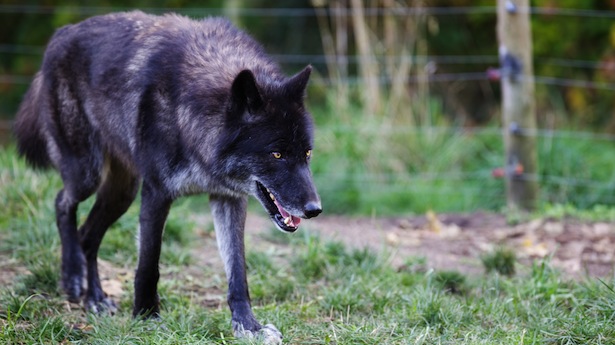
© Photo: Wolf via Shutterstock
Official explanation of marauding wild dogs for deaths of five people found with horrific flesh injuries prompts public backlash
Crime scene tape strung between trees in a hilly park in the working class Mexico City suburb of Iztapalapa marks the place where a teenage couple were found dead last weekend, the flesh torn from their bones.
A week earlier, a young mother and her baby were found similarly mutilated. A cuddly toy and solitary, deflating gas balloon are the only remaining signs of the grim discovery.
It might all look depressingly familiar in the context of Mexico's drug wars, in which tortured bodies dumped in the dust no longer even shock. But in these cases the Mexican authorities have discounted human depravity and are instead blaming a marauding pack of stray dogs, conjuring up a different kind of horror - and a new furore.
City investigators said the victims died from loss of blood due to wounds - including severed limbs - caused by many dogs, and that no other kinds of wounds were found. They said 56 wild dogs had now been rounded up and samples from their claws, hair and faeces were being analysed for human remains. DNA tests would determine whether there were any matches with the four victims.
Authorities said on Wednesday that the death of a teenage girl in December in the same area was also being linked to the dogs.
So far the appeals to forensic science have done little to calm the ballooning controversy, with many questioning whether even packs of dogs would go so far. There have also been reports in local media that evidence of "satanic rituals" have been found in a cave in the hilly park complex.
"It just isn't credible," says María, who lives in a shack about 50m from where the couple died. "There are a lot of dogs here but they run away from us and the night it happened we didn't hear anything. No barks, no screams, nothing."
Even officers from the Animal Vigilance Brigade don't seem completely convinced. Returning from a patrol of the area, officer Armando García said that when rounding up the dogs the brigade found a pack living inside abandoned drains. They were aggressive - normal seeing as their territory was being invaded - but the bodies were not found near that part of the hill. "This was very strange," he shrugged.
Surveying the scene with tears in her eyes, Ana María Martínez finds it hard to accept that the death of her brother and his girlfriend was due to atypical animal behaviour and is convinced that people must have been involved - perhaps with trained attack dogs. "We want the authorities to genuinely investigate who was behind this," she says.
Meanwhile, animal rights activists have made ample use of photographs showing a motley collection of rather docile-looking animals now behind bars. Twitter hashtags buzz with ironic taunts claiming that the dogs are scapegoats. Demonstrations are planned for the weekend.
"Those dogs would not have the strength to kill," says Arturo González. "I don't know what happened, but I am absolutely certain that it wasn't those dogs."
Not that the authorities can rest easy, even among those who do accept the official version. Officials have struggled to explain why it took them so long to act to stop the pack that they now say they believe began killing in mid December.
Whatever the truth, the case has highlighted a genuine problem of abandoned pets both in the capital and across Mexico. It is reportedly particularly acute in Ciudad Juarez, where dogs left behind by families fleeing drug violence have since produced several new generations.
Authorities in Mexico City, who say hospitals treat around 1,000 serious dog bites a year, are now promising free mass sterilization, as well as educational campaigns and the promotion of adoption. This seems set to begin with the alleged killers of Iztapalapa who, guilty or not, they have promised will not be put down but given to animal welfare groups.
Reader Comments
to our Newsletter